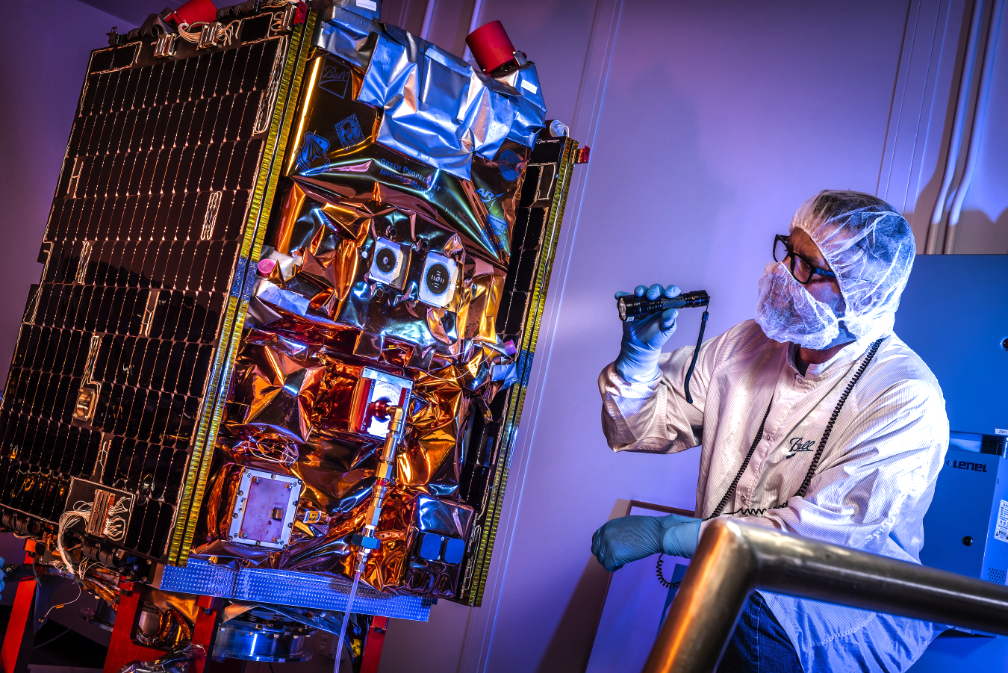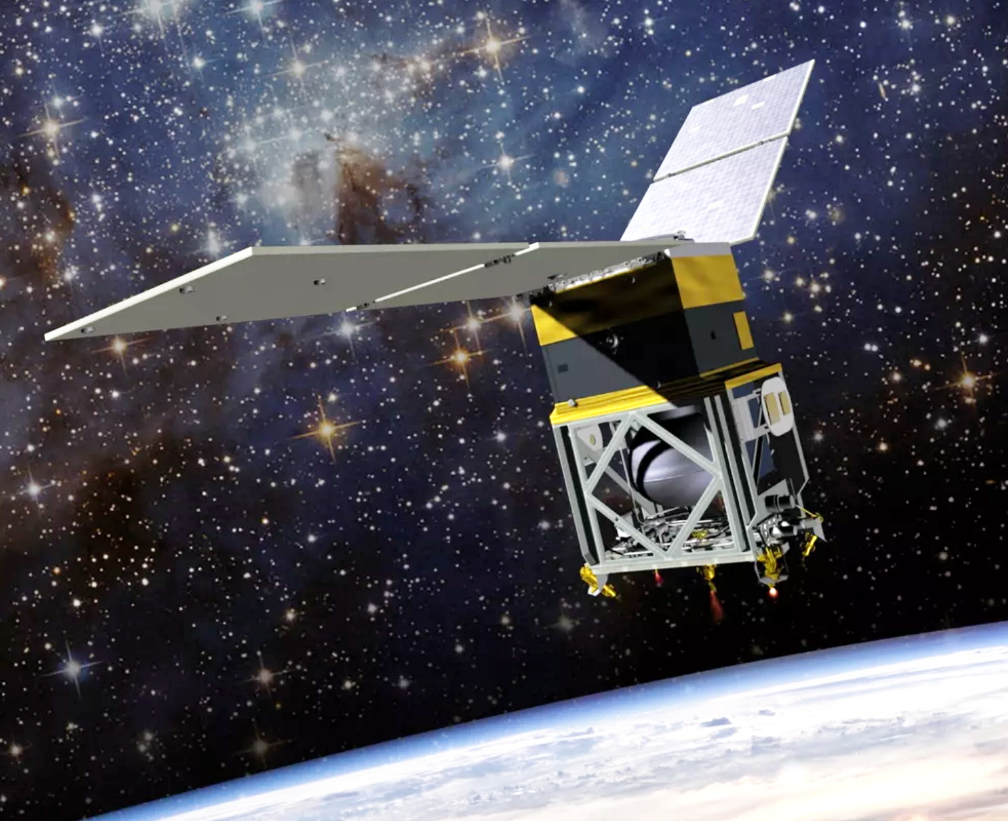 Ball Aerospace has successfully completed on-orbit testing of NASA’s Green Propellant Infusion Mission (GPIM), which included ASCENT, a non-toxic, high-performance propellant developed by the Air Force Research Laboratory (AFRL), on board a Ball-built smallsat.
Ball Aerospace has successfully completed on-orbit testing of NASA’s Green Propellant Infusion Mission (GPIM), which included ASCENT, a non-toxic, high-performance propellant developed by the Air Force Research Laboratory (AFRL), on board a Ball-built smallsat.

GPIM launched on June 25, 2019 at 2:30 a.m. EDT on board a SpaceX Falcon Heavy rocket and was commissioned in early July of the same year. Ball Aerospace is the primary contractor for NASA’s Green Propellant Infusion Mission (GPIM).
GPIM is part of NASA’s Technology Demonstration Missions program within the Space Technology Mission Directorate. Ball Aerospace is the primary contractor for NASA’s Green Propellant Infusion Mission (GPIM). GPIM is part of NASA’s Technology Demonstration Missions program within the Space Technology Mission Directorate.
Ball designed and built the small satellite, which contains NASA’s first opportunity to demonstrate the practical capabilities of a “green” propellant and propulsion system in orbit – an alternative to conventional chemical propulsion systems. The propellant is a Hydroxyl Ammonium Nitrate fuel and oxidizer monopropellant developed by the AFRL.
GPIM is part of NASA’s Technology Demonstration Missions program within the Space Technology Mission Directorate (STMD), and Christopher McLean of Ball Aerospace serves as the principal investigator. Aerojet Rocketdyne designed and built the thruster payload for GPIM that provides propulsion for the spacecraft.
Ball Aerospace and its partners tested the satellite thruster capabilities by verifying the propulsion subsystem, propellant performance, thruster performance and spacecraft attitude control performance. While in orbit, GPIM is testing the fuel and compatible propulsion system – which includes tanks, valves, and thrusters – by conducting orbital maneuvers to demonstrate the propellant’s performance during attitude control maneuvers and orbit lowering.
With approximately 95 percent of the demonstration completed to date, the flight mission has proven that the ASCENT fuel and compatible propulsion system can be a viable, effective alternative for NASA and the commercial spaceflight industry. GPIM will soon begin a final series of burns that will deplete the remainder of the ASCENT fuel and the spacecraft will reenter the earth’s atmosphere to complete the mission.
As the prime contractor for GPIM, Ball Aerospace is responsible for system engineering; flight thruster performance verification; ground and flight data review; spacecraft bus development; payload assembly integration and test; and launch and flight support. GPIM uses the Ball Configurable Platform (BCP) smallsat, which is about the size of a mini refrigerator.

The BCP smallsat provides standard payload interfaces and streamlined procedures, allowing rapid and affordable access to space with flight-proven performance. There are currently two additional BCP small satellites performing on orbit: STPSat-2, which launched in November 2010, and STPSat-3, which launched in November 2013. The two STP satellites were built for the U.S. Air Force Space Test Program’s Standard Interface Vehicle (STP-SIV) project.
Executive Comments
“The successful completion of this mission advances in-space propulsion for the entire user community, which opens up the possibility for a variety of missions,” said Dr. Makenzie Lystrup, VP and GM, Civil Space, Ball Aerospace. “GPIM has the potential to inspire new ideas and new missions, which could mean smaller spacecraft, faster and easier ground processing, longer design lives and more – enabling science at any scale.”

“Aerojet Rocketdyne’s specially-engineered green propulsion system proved that satellites can operate on orbit utilizing hydrazine-alternative propellant,” said Jim Maser, SVP of space at Aerojet Rocketdyne. “With an extensive offering of flight proven chemical and electric propulsion systems, green propulsion was a natural progression for the company and we’re excited to help usher in a new era of satellite operations.”

